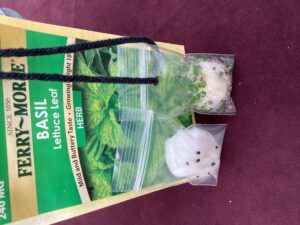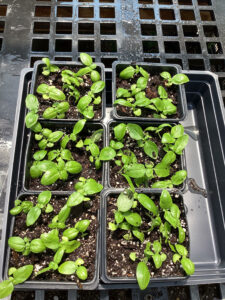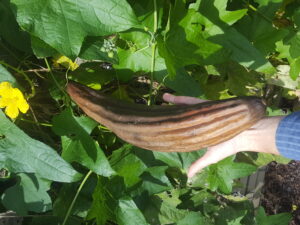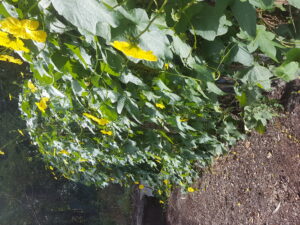Fun Ideas With Seeds – Summer
go.ncsu.edu/readext?1000829
en Español / em Português
El inglés es el idioma de control de esta página. En la medida en que haya algún conflicto entre la traducción al inglés y la traducción, el inglés prevalece.
Al hacer clic en el enlace de traducción se activa un servicio de traducción gratuito para convertir la página al español. Al igual que con cualquier traducción por Internet, la conversión no es sensible al contexto y puede que no traduzca el texto en su significado original. NC State Extension no garantiza la exactitud del texto traducido. Por favor, tenga en cuenta que algunas aplicaciones y/o servicios pueden no funcionar como se espera cuando se traducen.
Português
Inglês é o idioma de controle desta página. Na medida que haja algum conflito entre o texto original em Inglês e a tradução, o Inglês prevalece.
Ao clicar no link de tradução, um serviço gratuito de tradução será ativado para converter a página para o Português. Como em qualquer tradução pela internet, a conversão não é sensivel ao contexto e pode não ocorrer a tradução para o significado orginal. O serviço de Extensão da Carolina do Norte (NC State Extension) não garante a exatidão do texto traduzido. Por favor, observe que algumas funções ou serviços podem não funcionar como esperado após a tradução.
English
English is the controlling language of this page. To the extent there is any conflict between the English text and the translation, English controls.
Clicking on the translation link activates a free translation service to convert the page to Spanish. As with any Internet translation, the conversion is not context-sensitive and may not translate the text to its original meaning. NC State Extension does not guarantee the accuracy of the translated text. Please note that some applications and/or services may not function as expected when translated.
Collapse ▲Plants are a fun way to engage people of all ages.
Here are some summer seeding ideas and ways we have used the seeds in our therapeutic horticulture program.
Basil – likes it hot, making it a great plant to grow in the hot summers of the coastal south. The seed germinates quickly, usually within 5 days. The aromatic leaves of mature plants give you great material for sensory engagement. There are many interesting types of basil, including purple leaves, very large or ruffled leaves, and petite mini-leaf varieties. Basil seeds are very fine, but these activities should be suitable for most levels of fine motor development.
Activity ideas:
- Basil seed necklace. This activity was developed through 4-H. It is fun for people of all ages and if you wear the necklace, your body heat helps the seeds sprout in 1 day. While it is a bit tedious and requires adept fine motor skills, you can get the sprouts out of the “pendant” and plant them in soil to grow mature plants. 4-H Basil Seed Necklace Lesson
- Dixie cups – Broadcast seeding in dixie cups. As basil seeds are very fine, it is next to impossible to pick just one, have your participant(s) sprinkle a few seeds in a container to broadcast seeds. Once the plants are big enough they can separate out the seedling and plant them in separate containers. Dixie cups are inexpensive, easy to transport and make great starter pots for seedlings, but you can use any type of container you have available, just make sure it is clean to avoid pests and disease issues.
- Bring out the mucilage! Mucilage is a gel type substance produced by the basil seed when it gets wet. Put a few seeds in the palm of your participant’s hand and add a few drops or water. Within a minute the seed will begin to soak up the water and form the gel. The mucilage helps the seed store water while it germinates.

Basil seed necklaces

Basil seedlings, sow through broadcast seeding
Marigold – these flowers are profuse bloomers throughout the summer and fall. The seeds germinate in 4 – 7 days, so you see the results of your work quickly, once planted in the garden they often self-sow.
Tagetes (Marigold) | North Carolina Extension Gardener Plant Toolbox
Activity ideas:
- Harvesting seeds from marigolds is a fun and easy activity. On your marigold plant, you know the flowers are ready to harvest for seed with the petals at the base of the bloom are dry and turning brown. Pick off the plant and allow the blooms to completely dry out before harvesting the seed, alternatively you can also let the blooms completely dry out on the plant. To harvest the seed, pull the dried flowers off the top to reveal the seeds, then pull the seeds out of the base of the flower.
- Deadhead your plants. Once your marigold plant is growing and producing flowers, it is important to pinch out or deadhead the spent flowers, this promotes more flowering. Save the flower heads and then harvest the seeds!
- Marigold postcards for planting. Using a stiff paper, card stock, index cards, grocery bags (cut to size) – and “glue” made from flour and water, paint marigold seeds onto your paper, let dry and plant.
Loofah – Luffa aegyptiaca is a gourd vine whose fruits can be dried for bath sponges. The seeds are large and easy to manipulate. They are excellent growers in our hot and humid climate, sprouting in 7 – 12 days. The vine is profusely covered with large yellow flowers, loved by bees and other pollinators.
Activity ideas:
- Toilet paper roll pots – You can make compostable pots out of recycled toilet paper rolls and the large seed loofah makes it easy for most people to plant one seed per container. Fold the bottom third of the toilet paper roll in to create a pot bottom, fill with soil, plant your seed, water. When the seed sprouts and is ready to go in the ground, you can plant the whole container. Dixie cups, peat pots and other compostable pots will work for this as well.
- Harvest seeds out of the dried gourd. Once the loofah is completely dry, you will be able to shake the fruit and hear the seeds rattling inside. Cut one end of the loofah off and pour the seeds out, individual fruits can have 20 -30 seeds!

Loofah vine with fruit

Loofah vine growing on a fence
Moonflower – in our area the moonflower vine is grown as an annual. It is in the morning glory family, but its fragrant, large white flowers open at night.
Activity ideas:
- Soak in paper towels and watch the seeds sprout, then plant in soil. Place moonflower seeds in between moist paper towels and check daily to see if the seeds have sprouted. Seeds germinate in 7 – 12 days. Make sure to keep your paper towels evenly moist during this time. The seeds are large and it is easy to see it begin to sprout – the first emergence from the seed is called the hypocotyl. Once the hypocotyl appears, you can plant the seeds in individual containers and share with your participants.
- Sow your seeds in cardboard egg cartons – then the sprout can be planted directly in the ground., egg carton pot & all. One seed can go in each cell of the carton, once the seeds have sprouted the cells can be cut apart or shared with participants.
Sunflowers – With over 150 varieties of sunflowers, this plant family has something for everyone. Many types have large seeds, easy for manipulation. These beautiful yellow to orange flowers are great for pollinators and their seeds provide a food source for wildlife.
Helianthus (Sunflower) | North Carolina Extension Gardener Plant Toolbox
Activity ideas:
- Observe seed growth. Using a jam jar or recycle zip lock bag, watch the sunflower seed grow as the seed cracks, the hypocotyl appears, a shoot forms, with one end developing roots and the other end leaves. Put a wet paper towel in your jar or bag, add a large sunflower seed, place it in a sunny spot and watch the magic happen.
- Observe plant movement. Sunflowers are heliotropic, which means the plant follows the movement of the sun. Plant a pot with 5 to 7 sunflower seeds, place in a sunny window, as the plants grow, they will lean toward the sun, if you turn the pot so the plants are leaning away from the sun, they will move back toward the sunlight.




